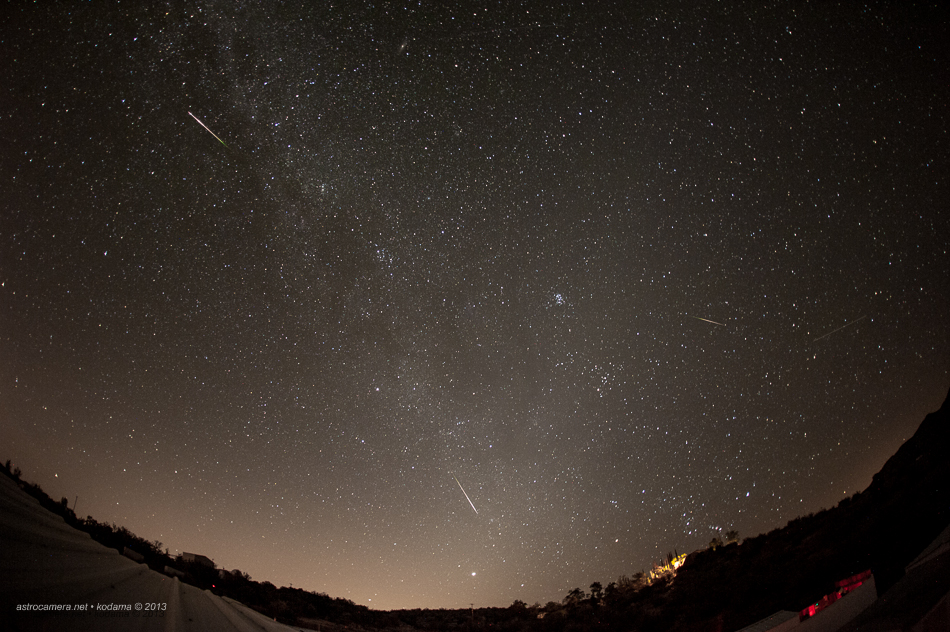Photographing the Perseid meteor shower this year was a routine effort this year compared to the adventure we had in 2012 with lightning, hail, and flash flooding. This time we had perfectly clear skies all night, mild temperatures, and just a faint trace of a breeze. I shot another all-night, wide-angle time-lapse movie (to be posted later), but there were no exceptional fireballs or bursts of activity to report.
Despite what seemed to be routine activity for the Perseid shower, I did manage to capture 3 Perseid meteors in a single (not-composited) 30 second frame. And equally amazing was the fact that no airplanes were caught in the photo! For a large all-night composite view, click on the image below:

Technical details: Nikon D700 / ISO 3200 / Lens: Sigma 15mm @ f/2.8 / 30 sec. exposures / stationary tripod
It's too bad that this burst of activity didn't persist all night. That would have made a spectacular meteor shower!
One thing I wanted to do different this year was to additionally shoot directly at the radiant with a relatively narrow-angle lens. I used an old (film era) Nikon 105mm Micro Nikkor f/2.8 lens on a Nikon D600 full-frame camera for this. Disappointingly, I managed to capture only 5 possible meteors, 4 of which were definitely Perseids. These were combined into a composite photo:

Technical details: Nikon D600 / ISO 1600 / Lens: Nikon 105mm @ f/2.8 / 20 sec. exposures / Tracking mount: Losmandy G11
The star cluster in the upper part of the frame is called the Double Cluster, consisting of NGC869 and NGC884.
I've added lines from the meteor tracks to trace backwards from 4 of the 5 meteors to the Perseid shower radiant. The area of intersection for the lines corresponds reasonably well with coordinates I found online for the Perseid radiant - RA 3h 04m, Dec. +58°, though, I'm not sure of the original source of these coordinates. The 4 meteors were photographed at 12:08, 2:18, 2:45, and 3:32am.
The fifth meteor may have been a sporadic meteor (not associated with the Perseids) or possibly just a sun glint off a satellite since it doesn't have any color to it.

